Electro-Optical Performance of Organic Thin-Film Using HAT(CN)6 between Anode and Organic Materials
Abstract
:1. Introduction
2. Materials and Methods
3. Results and Discussion
4. Conclusions
Author Contributions
Funding
Acknowledgments
Conflicts of Interest
References
- Pope, M.; Kallmann, H.P.; Magnante, P. Electroluminescence in Organic Crystals. J. Chem. Phys. 1963, 38, 2042–2043. [Google Scholar] [CrossRef]
- Tang, C.W.; VanSlyke, S.A. Organic electroluminescent diodes. Appl. Phys. Lett. 1987, 51, 913–915. [Google Scholar] [CrossRef]
- Tokito, S.; Taga, Y. Organic electroluminescent devices fabricated using a diamine doped MgF2 thin film as a hole-transporting layer. Appl. Phys. Lett. 1995, 66, 673–675. [Google Scholar] [CrossRef]
- Van Slyke, S.A.; Chen, C.H.; Tang, C.W. Organic electroluminescent devices with improved stability. Appl. Phys. Lett. 1996, 69, 2160–2162. [Google Scholar] [CrossRef]
- Hwang, S.G.; Park, H.G.; Park, M.H.; Park, S.G. Homeotropic alignment behavior of liquid crystal molecules on self-assembled monolayers with fluorinated alkyl chain. J. Vac. Sci. Technol. A 2018, 36, 041401-1–041401-4. [Google Scholar] [CrossRef]
- Aziz, H.; Popovic, Z.D.; Hu, N.X.; Hor, A.M.; Xu, G. Degradation Mechanism of Small Molecule-Based Organic Light-Emitting Devices. Science 1999, 283, 1900–1902. [Google Scholar] [CrossRef] [PubMed]
- Tao, Y.; Wub, K.; Huang, K.; Perng, T. Odd–even modulation of electrode work function with self-assembled layer: Interplay of energy barrier and tunneling distance on charge injection in organic light-emitting diodes. Org. Electron. 2011, 12, 602–608. [Google Scholar] [CrossRef]
- Kang, H.; Kim, J.H.; Kim, J.K.; Seo, J.; Park, Y. Interface Electronic Structure of a Strongly Electron Withdrawing Molecule on an Indium-tin-oxide Surface. J. Korean Phys. Soc. 2011, 59, 3060–3063. [Google Scholar] [CrossRef]
- Huang, P.R.; He, Y.; Cao, C.; Lu, Z.H. The origin of the high work function of chlorinated indium tin oxide. NPG Asia Mater. 2013, 5, 1–6. [Google Scholar] [CrossRef]
- Sharma, A.; Haldi, A.; Hotchkiss, P.J.; Marder, S.R.; Kippelen, B. Effect of phosphonic acid surface modifiers on the work function of indium tin oxide and on the charge injection barrier into organic single-layer diodes. J. Appl. Phys. 2009, 105, 074511-1–074511-6. [Google Scholar] [CrossRef]
- Yang, J.P.; Bussolotti, F.; Li, Y.Q.; Zeng, X.H.; Kera, S.; Tang, J.X.; Ueno, N. The role of gap states on energy level alignment at an α-NPD/HAT(CN)6 charge generation interface. Org. Electron. 2015, 24, 120–124. [Google Scholar] [CrossRef]
- Kim, Y.K.; Kim, J.W.; Park, Y. Energy level alignment at a charge generation interface between 4,4′ -bis(N-phenyl-1-naphthylamino)biphenyl and 1,4,5,8,9,11-hexaazatriphenylene-hexacarbonitrile. Appl. Phys. Lett. 2009, 94, 063305-1–063305-3. [Google Scholar] [CrossRef]
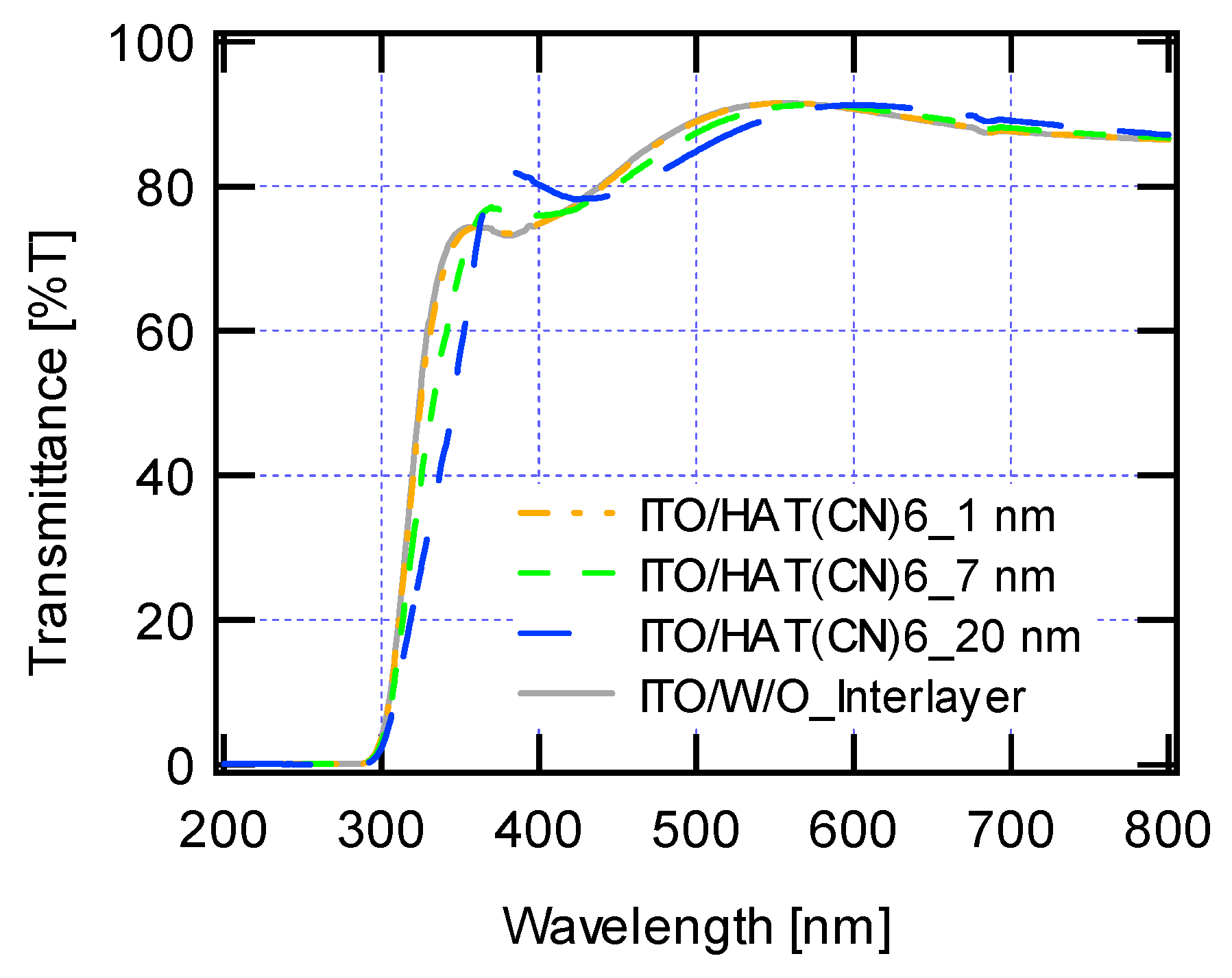
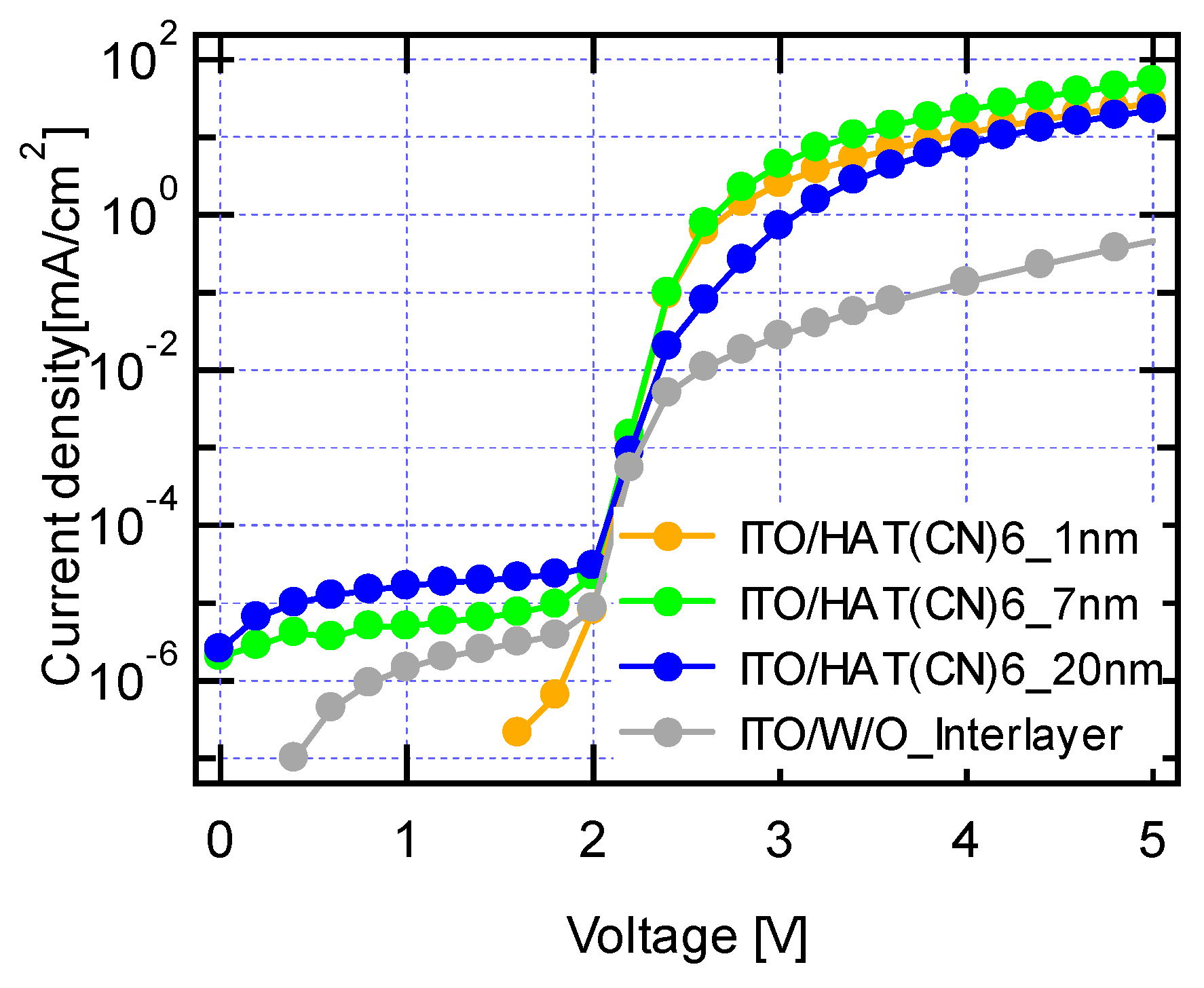
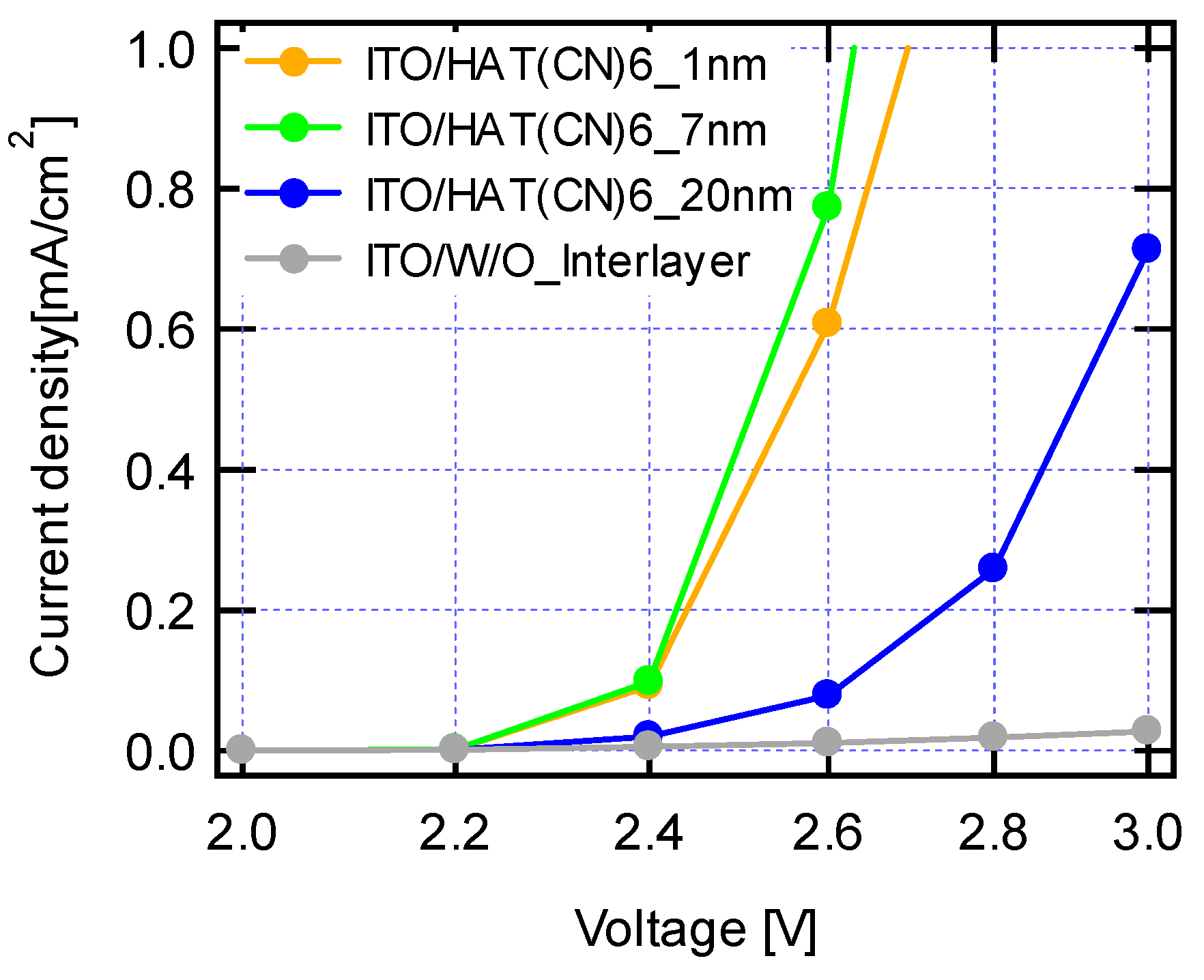
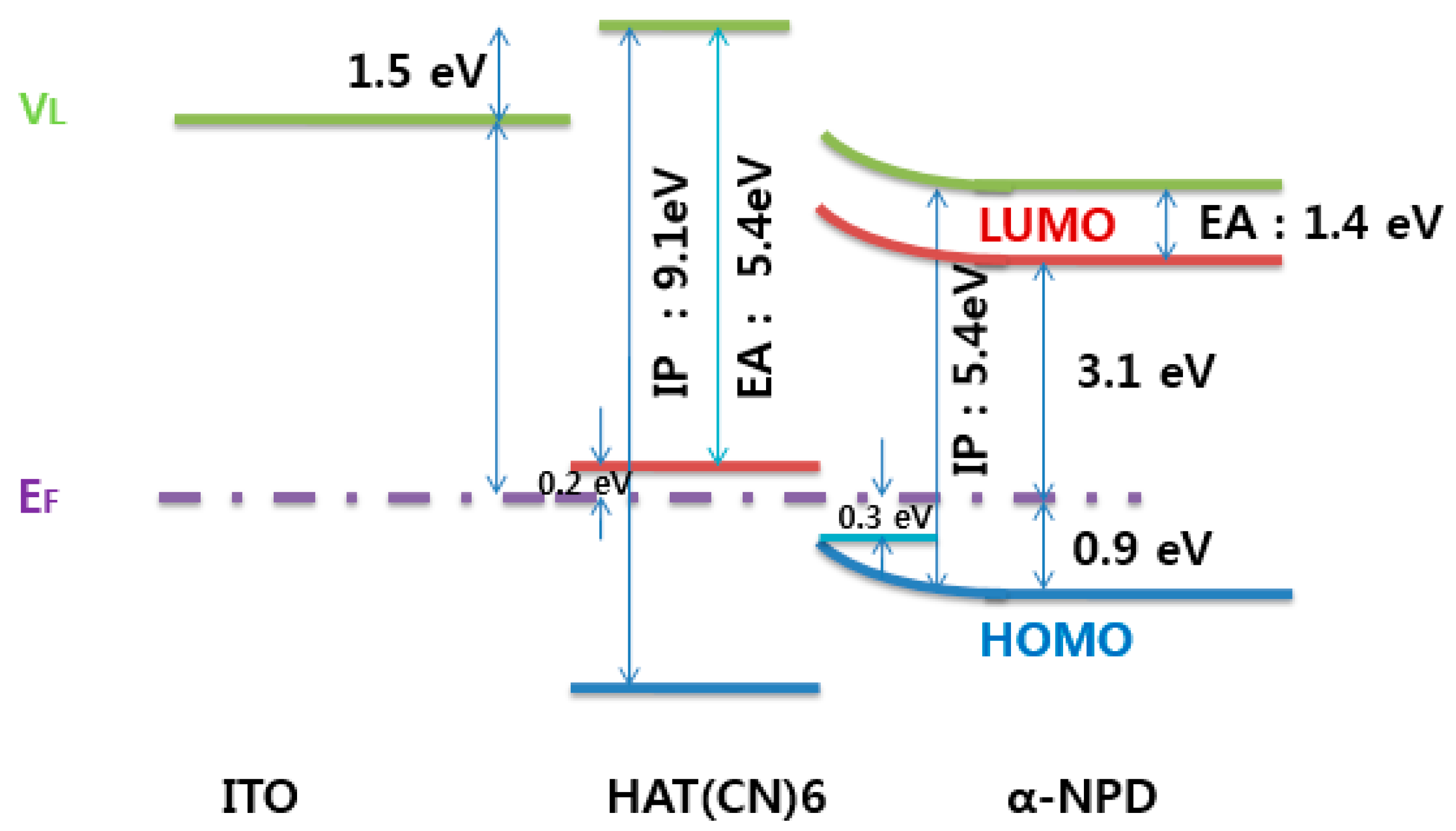
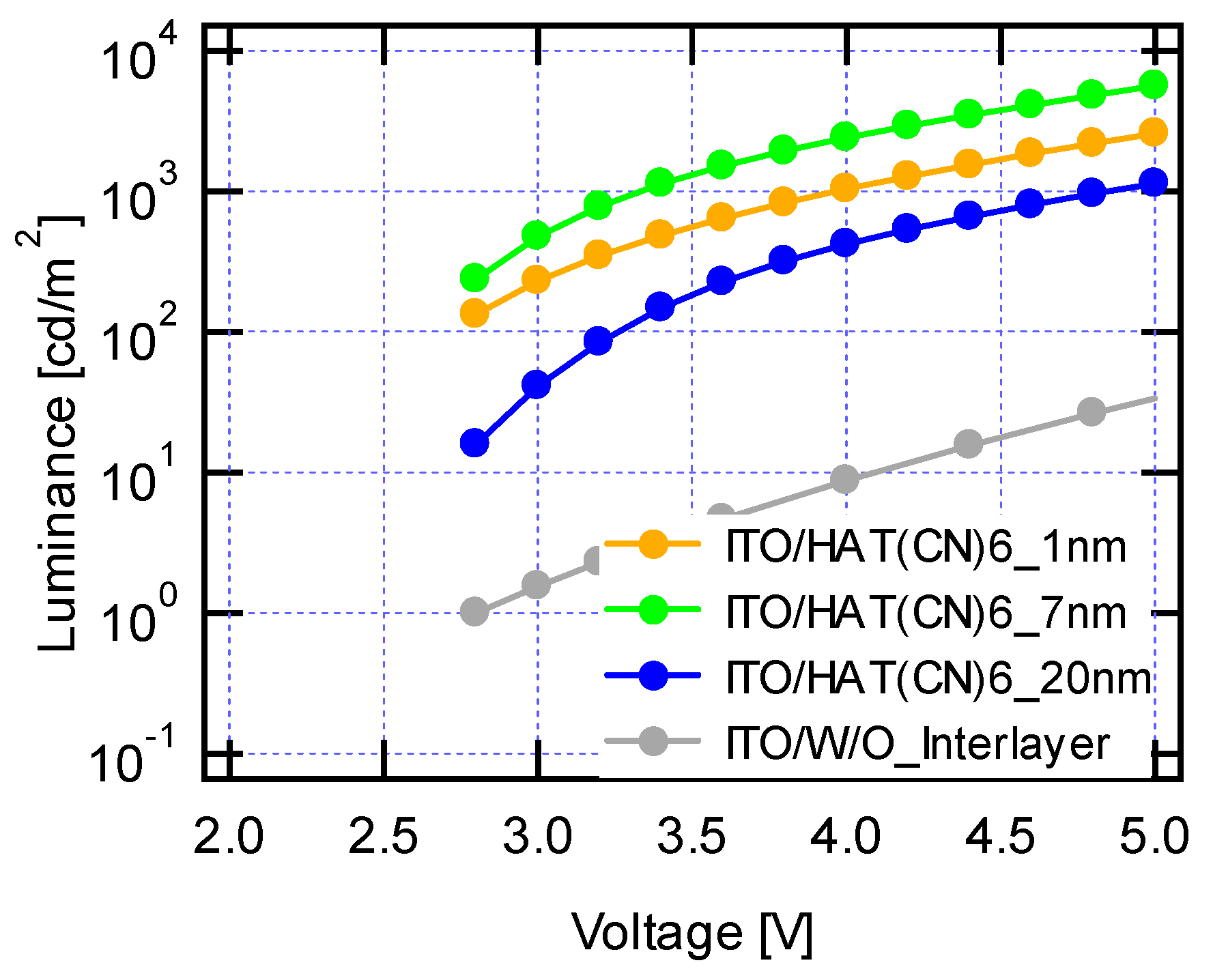
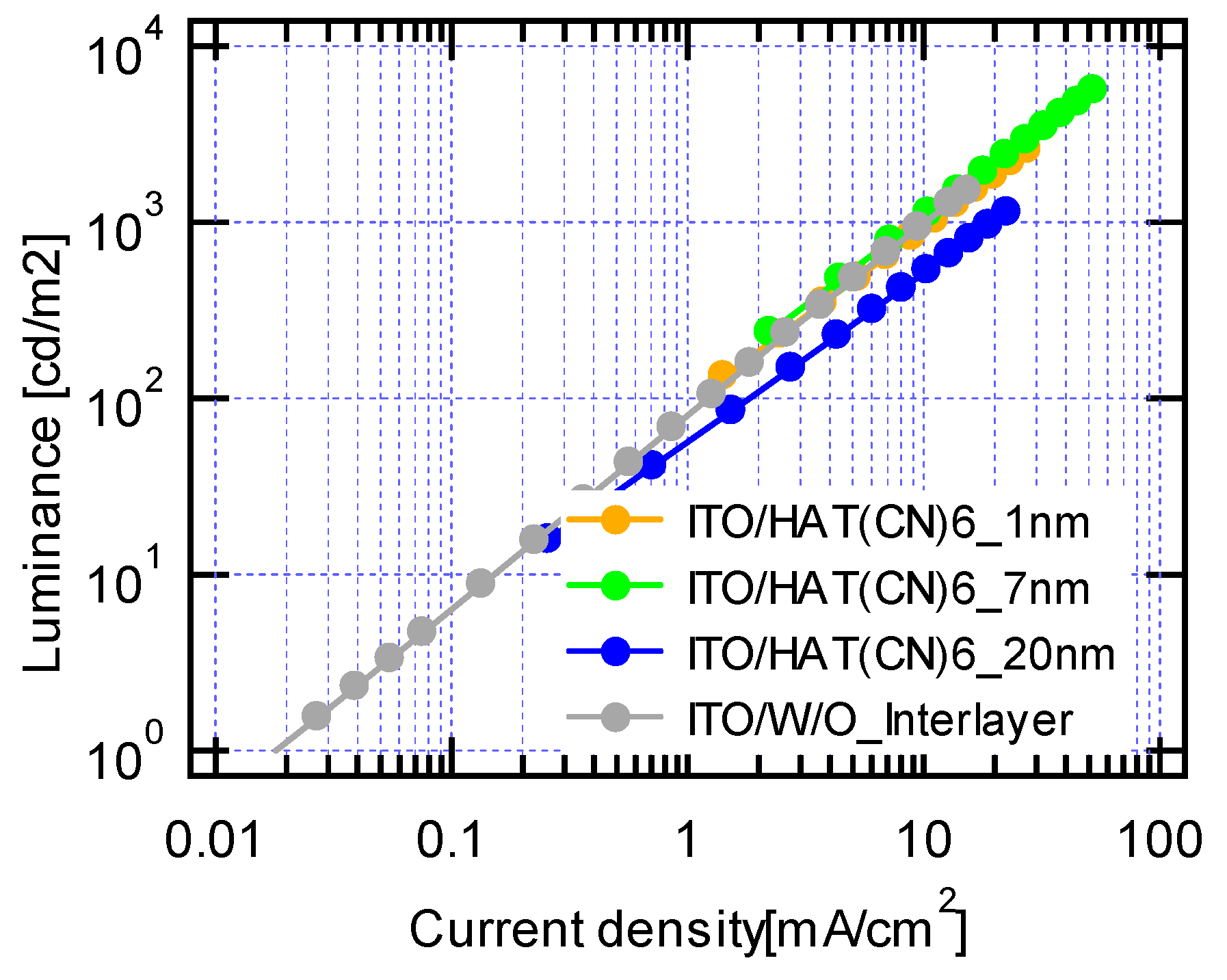
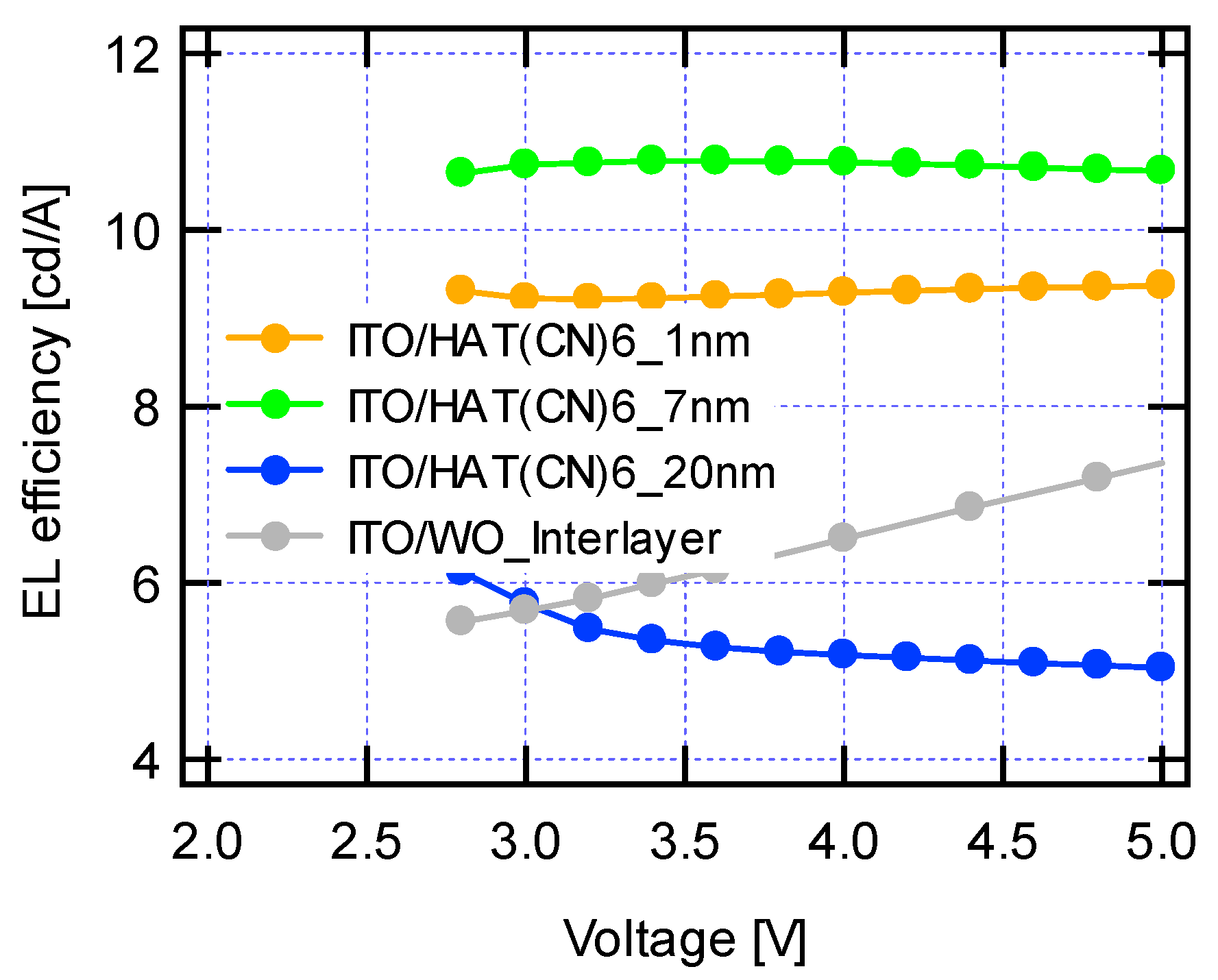
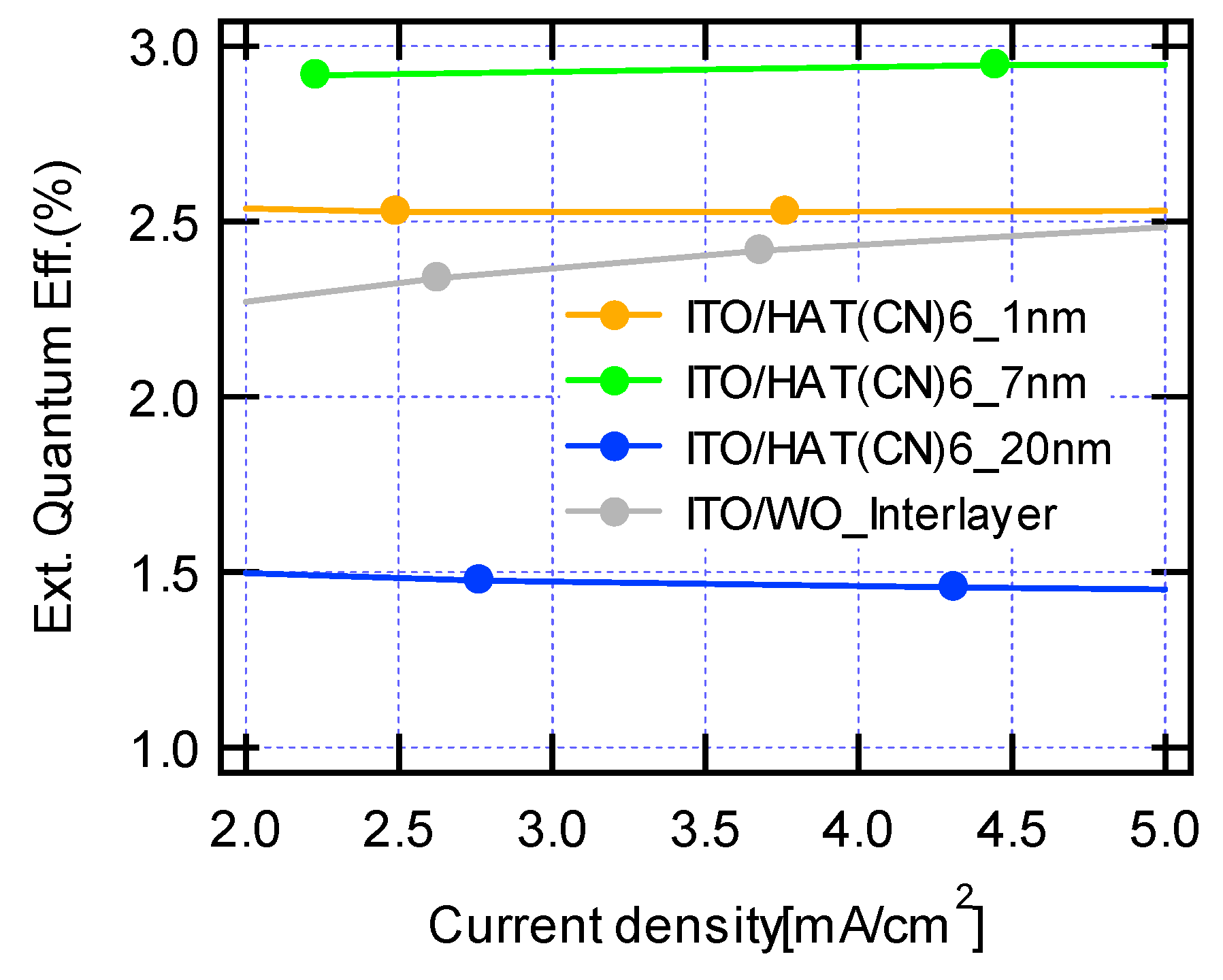
© 2019 by the authors. Licensee MDPI, Basel, Switzerland. This article is an open access article distributed under the terms and conditions of the Creative Commons Attribution (CC BY) license (http://creativecommons.org/licenses/by/4.0/).
Share and Cite
Park, H.-G.; Park, S.-G. Electro-Optical Performance of Organic Thin-Film Using HAT(CN)6 between Anode and Organic Materials. Coatings 2019, 9, 648. https://doi.org/10.3390/coatings9100648
Park H-G, Park S-G. Electro-Optical Performance of Organic Thin-Film Using HAT(CN)6 between Anode and Organic Materials. Coatings. 2019; 9(10):648. https://doi.org/10.3390/coatings9100648
Chicago/Turabian StylePark, Hong-Gyu, and Sang-Geon Park. 2019. "Electro-Optical Performance of Organic Thin-Film Using HAT(CN)6 between Anode and Organic Materials" Coatings 9, no. 10: 648. https://doi.org/10.3390/coatings9100648
APA StylePark, H.-G., & Park, S.-G. (2019). Electro-Optical Performance of Organic Thin-Film Using HAT(CN)6 between Anode and Organic Materials. Coatings, 9(10), 648. https://doi.org/10.3390/coatings9100648




